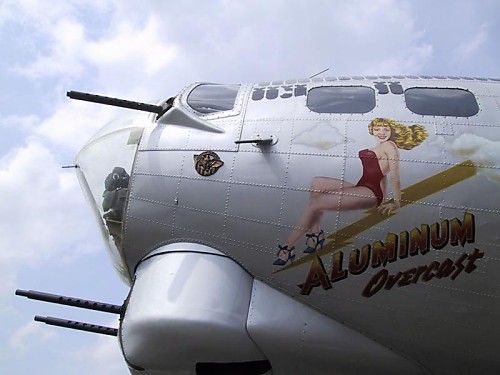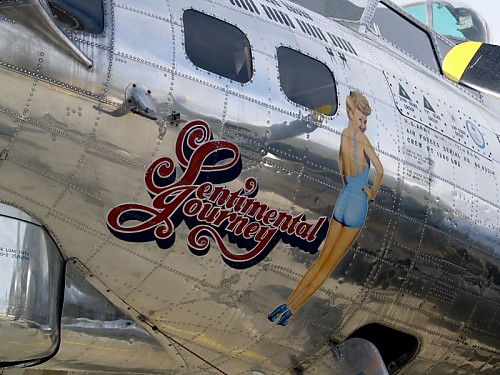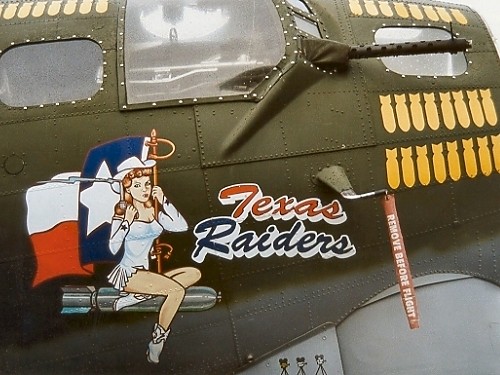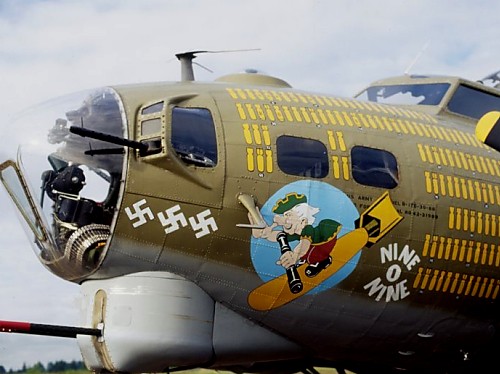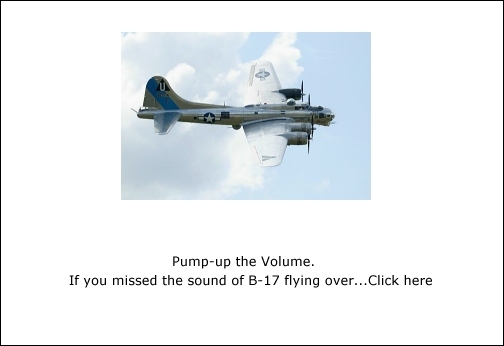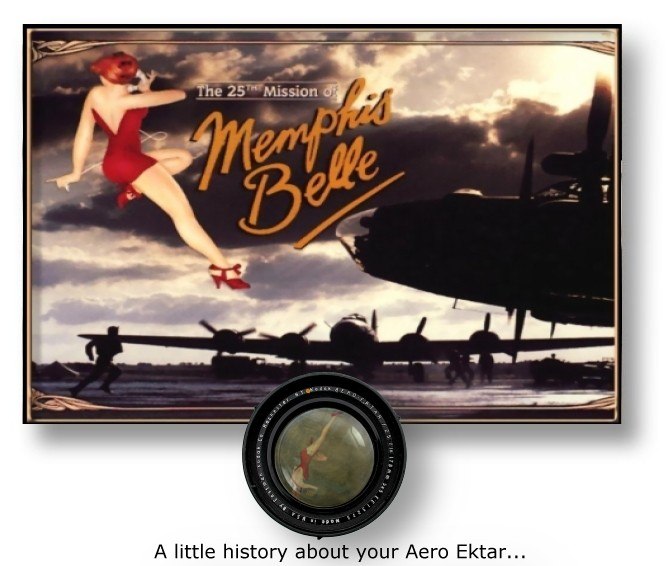
|
This website: www.memphisbelle.com is dedicated to the crew of the "Memphis Belle", a Flying Fortress B-17 who returned home after 25 missions.
The last flight was on July 17, 1946, her spirit continues to fly and lives in fans and admirers We Photographers are lucky quite a few came back home with their K-21 cameras and AERO EKTAR lenses. The K-21 with its Aero Ektar was a very important tool making pinpoint bombing possible.
There has been a remarkable revival of the Aero Ektar since they became Army surplus back in 1946. |
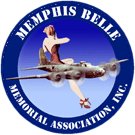
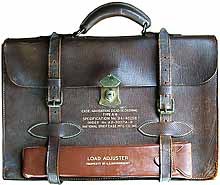

|
Exerpt from:
Memphis Belle, B-17 Flying Fortress Official Web Site of the Memphis Belle, the B-17 Bomber made famous in World War II. www.memphisbelle.com/ We present this site as a tribute to the Memphis Belle and her crew and through them to all WWII veterans, who demonstrated their strength of character and determination serving and sacrificing … All Heroes … in our fight to defend freedom and democracy. That fight continues today. The "Memphis Belle" has recently been relocated to the National Museum of the United States Air Force in Dayton, Ohio. In order to visit and view the "Belle," you will need to request a "behind the scenes tour" when you visit the museum. The Memphis Belle Memorial Association, Inc. is charged with honoring her history and her crew, and educating the generations to provide a better understanding of their services and sacrifices in the defense of freedom and democracy. We accept this responsibility as an honor and provide our website for your enjoyment and education. Though she took her last flight on July 17, 1946, her spirit continues to fly and lives in fans and admirers like you. Nothing can compare to the real airplane. And, "You have never seen her like this before!" Welcome to The Memphis Belle Web site! |
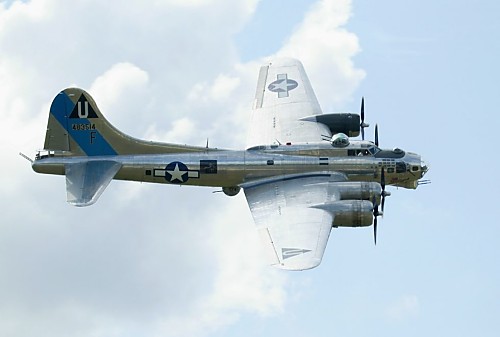 |  |
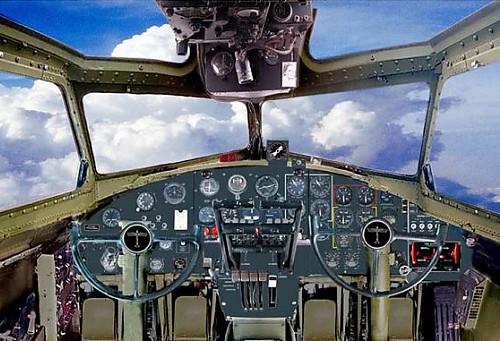 | 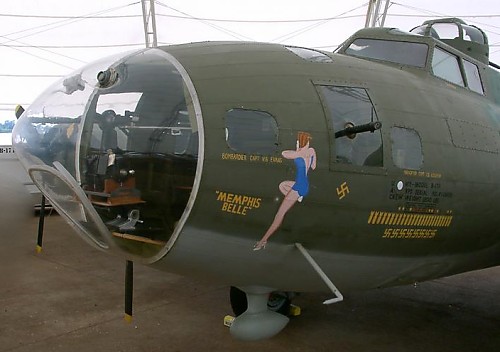 |
|
Some images about the former habitat of our Aero Ektar mounted in the K-21 on a B-17 K-21 CAMERA Initially they used the K-21 Eastman camera, but later installed the better K-22 with a wider plane of view. Gunners that had fired fifty calibers in anger were now trained in a whole new job that of photography. Much of the instructing came from I beleive, the 9th Photo Recon Sqn. At that time based in Italy and using a photo recon version of the B-17. It was their knowledge and expertise that helped to training the Casey Jones personnel in the work ahead. Their ground crews also helped in the recoinfiguration of the 305th/306th aircraft; helping to instal the cameras etc. The gunners would spend an hour at a time, huddled at the eyepiece of a camera. Not able to move hardly at all, not even to clear a mask from condensation. |
It was an unenviable job for them, and coined a readily used phrase ... A PAIN IN THE NECK. Each flight consisted of flying a gride area, requiring extreme accuracy by the Navigator and the Mickey 'H2X' operator. A run would be 200 miles, dead straight level. This allowed for a continious mosaic of pictures of the ground beneath. Any foul up ment that run would need to be flown again. Cameramen also had the basic skills to effect minor repairs to their own camera equipment. If a problem could be soilved whilst in the air, then a vital days mission would not be wasted.
Below the crew of the "Memphis Belle" |
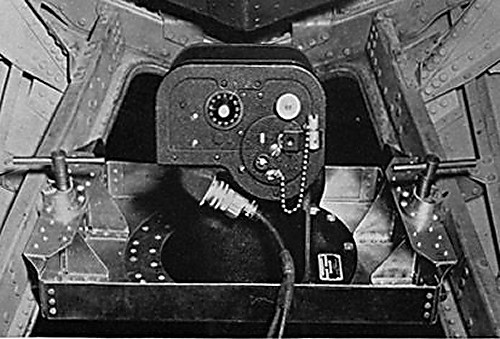 |  |
|
Some images about the former habitat of our Aero Ektar mounted in the K-24 on a B-25 K-24 CAMERA The Type K-24 Aircraft Camera is mounted to shoot through a window in the belly of the compartment on the right side. By means of the arc-shaped mount and wing nuts the camera can swing 50 degrees fore or aft of vertical. The big camera takes 5x5 inch pictures from aerial roll film that could take up to 125 pictures without reloading. Used for both bomb damage assessment (BDA) and photo-reconnaissance, the camera could be both electrically and manually operated. |
A Type B-3 Intervalometer sets up pre-selected intervals between exposures when the automatic timing feature is being used. The lens was the Kodak Aero Ektar f 2.5/7 inch lens. In automatic mode the camera would begin shooting when the bomb bay doors open. The pilot could also operate it manually with a switch on his switch panel. |
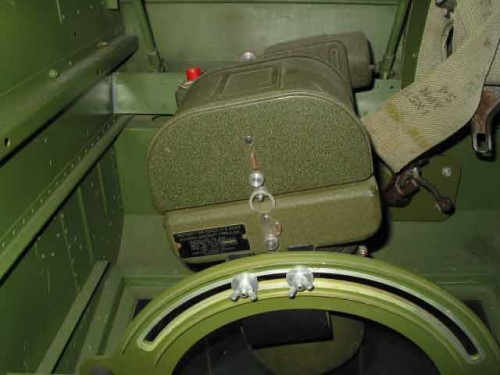 | 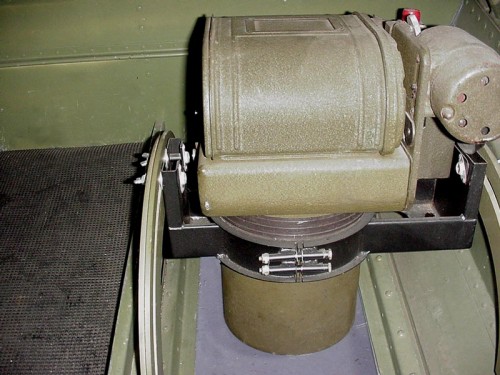 |

